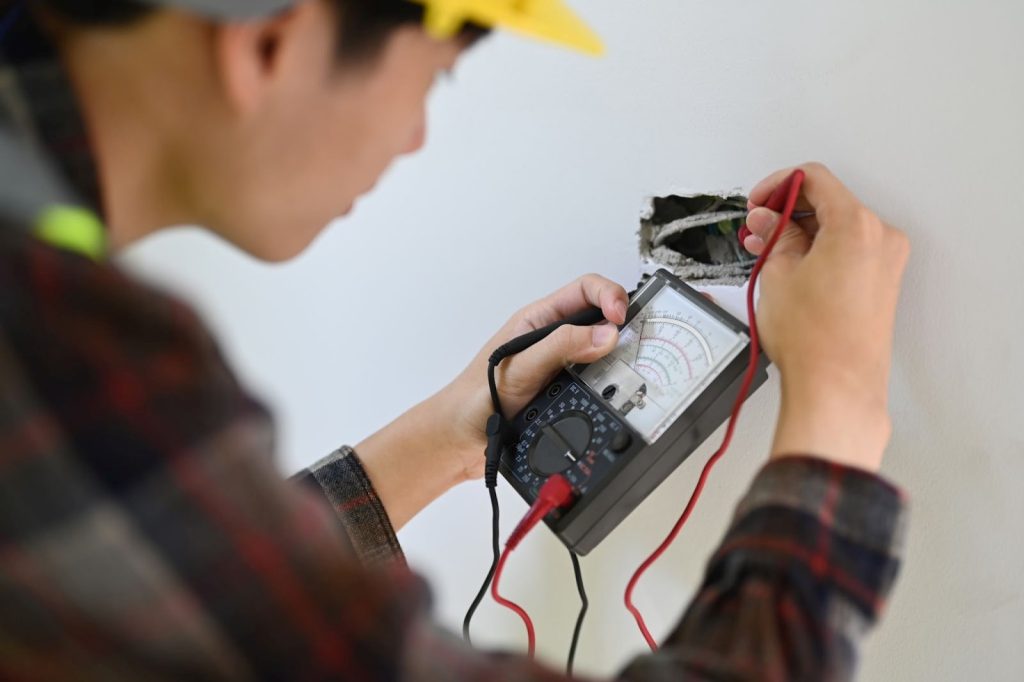In today’s technologically advanced world, we rely heavily on electrical appliances to make our lives more convenient and efficient. From the moment we wake up to the time we go to bed, we interact with various appliances that help us with our daily tasks. But have you ever wondered about the safety of these appliances? Electrical safety is important to protect ourselves and to prevent potential hazards such as electrical fires and shocks.
One crucial aspect of ensuring electrical safety is portable appliance testing (PAT). PAT testing involves the systematic examination of electrical appliances to ensure they are safe to use. In this article, we delve into the world of PAT testing and explore the appliances that require this essential safety check. Whether you’re a homeowner or a business owner, understanding which appliances require PAT testing is vital for maintaining a secure environment.
Why is PAT Testing Important?
PAT testing is crucial for ensuring electrical safety in various environments. This process involves conducting routine inspections and testing electrical appliances and equipment to identify potential faults or defects that could pose a risk of electric shock, fire, or other hazards. By performing PAT tests, organizations and individuals can effectively mitigate these risks, prevent accidents, comply with regulatory standards, and safeguard the well-being of individuals who interact with electrical devices on a daily basis.
Safety Standards and Regulations
Complying with safety standards and regulations ensures the well-being of both individuals and the electrical equipment they use. When it comes to electrical appliances, particularly portable ones, it’s crucial to adhere to testing requirements to maintain electrical safety.
As an individual or organization, you have safety obligations to protect yourself and others from potential electrical hazards. Although PAT testing is not a legal requirement, it plays a vital role in fulfilling your obligations to maintain safe conditions for employees and tenants. It provides a comprehensive assessment of your portable appliances, ensuring they meet the necessary safety standards. By regularly testing your electrical equipment, you demonstrate a commitment to maintaining a safe environment and minimizing the risk of accidents or injuries.
Who is responsible for PAT testing?
Common Appliances That Require PAT Testing
PAT testing is necessary for a wide range of electrical appliances to ensure their safety and proper functioning. Here are some common appliances that typically require PAT testing:
- Computers and Monitors: Desktop computers, laptop chargers, and computer monitors should undergo regular PAT testing to ensure electrical safety, as they are frequently used in office and home settings.
- Kitchen Appliances: Appliances such as microwaves, toasters, kettles, blenders, and coffee machines are commonly found in kitchens and should be tested to ensure they are safe to use.
- Power Tools: Various power tools, including drills, saws, sanders, and grinders, are used in construction, workshops, and DIY projects. Regular PAT testing is crucial to identify any electrical faults or issues that could endanger the user.
- Audiovisual Equipment: Items like televisions, speakers, projectors, DVD players, and amplifiers that are used in conference rooms, theaters, and entertainment centers should undergo PAT testing to ensure safe operation.
- Office Equipment: Office equipment, including printers, scanners, fax machines, photocopiers, and shredders, should be regularly tested to maintain a safe environment and prevent potential electrical hazards.
- Portable Electrical Appliances: Portable electrical devices that are frequently moved or used in different locations, such as extension leads, chargers, and power strips, should undergo regular PAT testing to ensure their safety.
It’s important to note that the specific appliances that require PAT testing may vary depending on the industry, environment, and regulations in place. Most electrical items require PAT testing and the above list was curated to give you a preliminary idea of how broad the scope of PAT testing is. Consulting with a qualified electrician or PAT testing professional can help determine the exact requirements for a particular setting.
PAT Testing in the Workplace
In commercial environments, there’s a wide range of electrical equipment and appliances that require PAT testing to ensure they are safe to use. This includes computers, printers, photocopiers, and other office equipment essential for daily operations. Additionally, communal kitchen appliances such as microwaves, fridges, and coffee machines fall under this category. It’s important to regularly inspect and test these appliances to prevent electrical hazards and maintain a safe working environment.
When it comes to more complex environments, such as laboratories or manufacturing facilities, the range of electrical equipment expands even further. This includes specialized machinery, power tools, and testing equipment. These types of equipment often have higher power requirements and may be subject to more intense operating conditions and therefore require more thorough testing.
PAT Testing for Home Appliances
Whilst homeowners are not required to PAT test the electrical equipment in their own home, landlords are responsible for the safety of their tenants and should PAT test electrical items in their properties. Common items that require PAT testing in a home environment include all domestic appliances such as washing machines, dishwashers, and microwaves. Moreover, any handheld equipment that plugs into mains electricity requires PAT testing such as vacuum cleaners, kettles, and fans.
A common electrical appliance that is overlooked when it comes to PAT testing in the home is your oven. As a rule of thumb, you should assume that any appliance that is plugged into your mains electricity needs PAT testing. Battery-operated equipment is exempt from the requirements, so you don’t need to worry about mobile phones and laptops, although their respective chargers will need to be assessed.
Should I Hire a Professional PAT Tester?
Hiring a professional PAT tester is a wise decision to ensure the safety of your electrical appliances. They have the training, tools, and expertise necessary to carry thorough testing and identify potential issues. Whether you own a rental property or want to ensure the safety of your workplace, bringing in a professional can provide you with peace of mind.
The risk level associated with electrical testing can vary depending on the type of appliance being tested. A professional PAT tester has the knowledge and experience to assess the risk level of each appliance and determine the appropriate testing procedures. This is especially important for equipment in offices and specialist equipment that may require more complex testing methods.
In addition to their expertise, professional PAT testers have access to specialized equipment that allows them to carry out thorough testing. They have the tools necessary to perform electrical tests, such as insulation resistance and earth continuity checks. These tests ensure that appliances are functioning correctly and do not pose a risk to users.
Professional PAT testing services
Benefits of Regular PAT Testing
Regular portable appliance testing offers several benefits that contribute to electrical safety and the overall well-being of individuals and organizations.
Enhanced Safety
The primary benefit of PAT testing is improved safety. By regularly testing electrical appliances, potential faults or defects can be identified and rectified before they become hazards. This helps prevent electrical shocks, fires, and other accidents, ensuring the well-being of individuals who use or interact with the appliances.
Compliance with Regulations
Many industries and organizations are subject to specific regulations and legal requirements regarding electrical safety. Regular PAT testing helps ensure compliance with these regulations, demonstrating a commitment to maintaining a safe working or living environment. Compliance not only avoids potential legal consequences but also fosters trust and confidence among employees, customers, and stakeholders.
Risk Reduction
PAT testing helps mitigate the risks associated with faulty electrical equipment. By identifying and addressing potential issues, the likelihood of accidents, injuries, or damage caused by electrical faults is significantly reduced. This proactive approach minimizes downtime, potential financial losses, and reputational damage that could arise from incidents caused by faulty appliances.
Increased Equipment Lifespan
Regular testing can contribute to the longevity and optimal performance of electrical appliances. By identifying and resolving issues early on, PAT testing helps prevent further damage or deterioration of equipment. This in turn extends the lifespan of appliances, reducing the need for frequent replacements and saving costs in the long run.
Peace of Mind
Regular PAT testing provides peace of mind to individuals, businesses, and organizations. Knowing that electrical appliances have undergone thorough inspections and testing instills confidence in their safety and reliability. This peace of mind extends to employees, customers, and occupants who can carry out their activities without undue concerns about electrical hazards.
Schedule a PAT test
With so many different appliances to keep on top of, the best way for employers and landlords to keep their employees and tenants safe is to hire expert PAT testers. At Legionella Risk and PAT Testing, electrical safety is our number one priority, which is why our dedicated engineers are trained to the highest level. Our team can come to your property or business to perform thorough tests, leaving you with a comprehensive report at the end.
Our tests involve:
- Inspection of plugs and wiring;
- Cable inspections and connection tests;
- Identifying continuity and testing it;
- Lead polarity checks;
- Insulation resistance tests.


